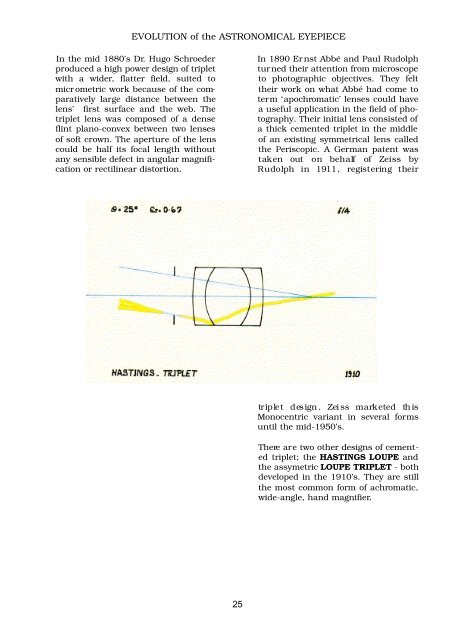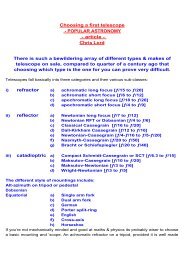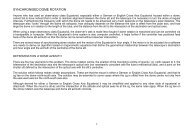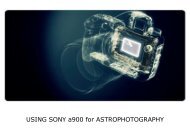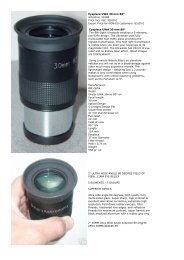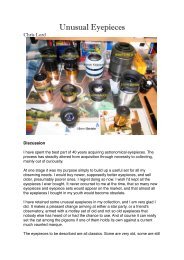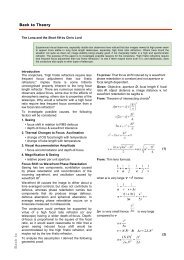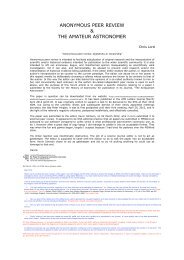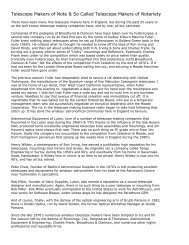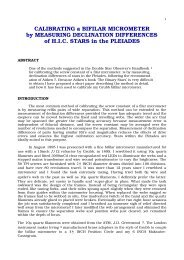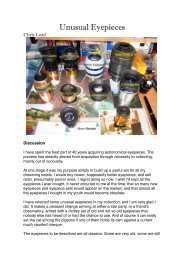Evolution of the Astronomical Eyepiece - Brayebrook Observatory
Evolution of the Astronomical Eyepiece - Brayebrook Observatory
Evolution of the Astronomical Eyepiece - Brayebrook Observatory
You also want an ePaper? Increase the reach of your titles
YUMPU automatically turns print PDFs into web optimized ePapers that Google loves.
EVOLUTION <strong>of</strong> <strong>the</strong> ASTRONOMICAL EYEPIECE<br />
In <strong>the</strong> mid 1880’s Dr. Hugo Schroeder<br />
produced a high power design <strong>of</strong> triplet<br />
with a wider, flatter field, suited to<br />
micr ometric work because <strong>of</strong> <strong>the</strong> comparatively<br />
large distance between <strong>the</strong><br />
lens’ first surface and <strong>the</strong> web. The<br />
triplet lens was composed <strong>of</strong> a dense<br />
flint plano-convex between two lenses<br />
<strong>of</strong> s<strong>of</strong>t crown. The aperture <strong>of</strong> <strong>the</strong> lens<br />
could be half its focal length without<br />
any sensible defect in angular magnification<br />
or rectilinear distortion.<br />
In 1890 Er nst Abbé and Paul Rudolph<br />
tur ned <strong>the</strong>ir attention from microscope<br />
to photographic objectives. They felt<br />
<strong>the</strong>ir work on what Abbé had come to<br />
term ‘apochromatic’ lenses could have<br />
a useful application in <strong>the</strong> field <strong>of</strong> photography.<br />
Their initial lens consisted <strong>of</strong><br />
a thick cemented triplet in <strong>the</strong> middle<br />
<strong>of</strong> an existing symmetrical lens called<br />
<strong>the</strong> Periscopic. A German patent was<br />
taken out on behalf <strong>of</strong> Zeiss by<br />
Rudolph in 1911, registering <strong>the</strong>ir<br />
triplet design . Zei ss marketed th is<br />
Monocentric variant in several forms<br />
until <strong>the</strong> mid-1950’s.<br />
There are two o<strong>the</strong>r designs <strong>of</strong> cemented<br />
triplet; <strong>the</strong> HASTINGS LOUPE and<br />
<strong>the</strong> assymetric LOUPE TRIPLET - both<br />
developed in <strong>the</strong> 1910’s. They are still<br />
<strong>the</strong> most common form <strong>of</strong> achromatic,<br />
wide-angle, hand magnifier.<br />
25


